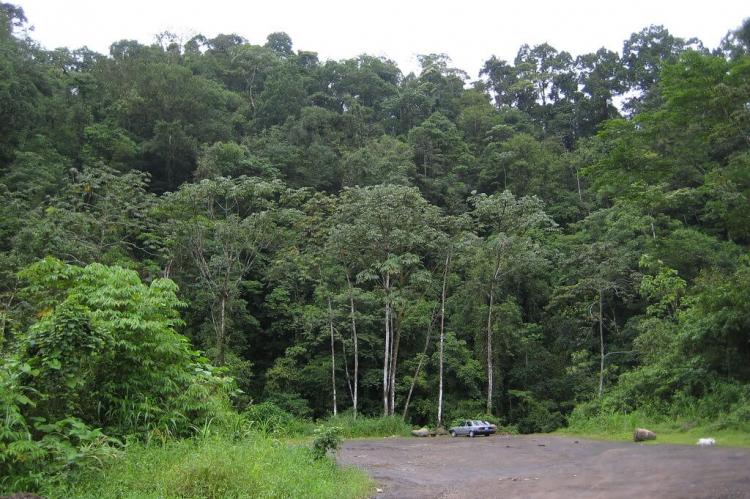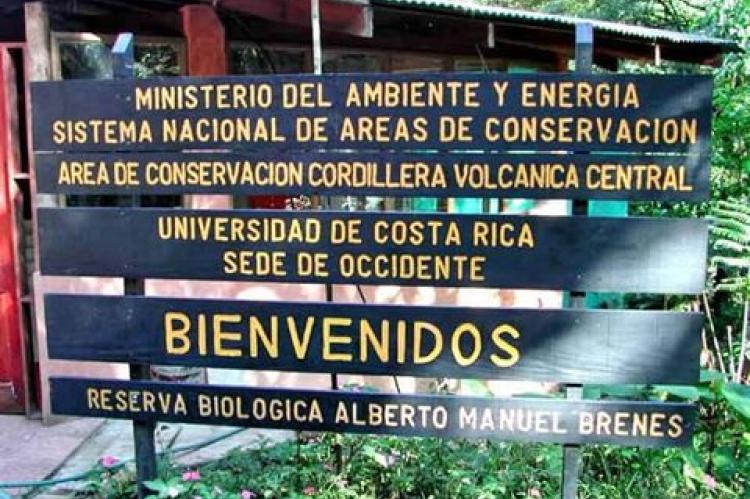Alberto Manuel Brenes Biological Reserve: A Sanctuary of Biodiversity
The Alberto Manuel Brenes Biological Reserve in north-central Costa Rica is a vibrant sanctuary of tropical biodiversity. Part of the Arenal Tilaran Conservation Area, this Reserve safeguards the rich forested regions near San Ramón, making it a crucial ecological haven in the country.
Exploring the Rich Biodiversity of Alberto Manuel Brenes Biological Reserve
The Alberto Manuel Brenes Biological Reserve, nestled in the southeastern Cordillera de Tilarán in north-central Costa Rica, is a vibrant sanctuary of tropical biodiversity. Part of the Arenal Tilaran Conservation Area, this Reserve safeguards the rich forested regions near San Ramón, making it a crucial ecological haven in the country.
Established in 1975 and renamed in 1993 to honor the renowned botanist Alberto Manuel Brenes, the Reserve is managed by the University of Costa Rica and the Ministry of Environment, Energy, and Telecommunications (MINAET).
Geographical and Environmental Significance
Location and Climate
The Reserve covers an area of 7,800 hectares (19,274 acres) and reaches elevations up to 1,520 meters (4,986 feet). It offers a unique blend of ecological significance and natural beauty. An average temperature of 21°C (69.8°F) and an annual rainfall of 3,461 mm (136 inches) create a lush environment for a diverse range of flora and fauna.
Geological Formation
The Reserve is predominantly located in the canton of San Ramón (Los Angeles and Zapotal Districts) in the province of Alajuela, with a small portion extending into the canton of Montes de Oro (Union District) in the province of Puntarenas. This tropical moist broadleaf forest biome, with a notable lower Montane rainforest zone, is characterized by its diverse topography and microclimates.
Flora of the Reserve
Diverse Plant Life
The Reserve's flora is extraordinarily diverse, with many species from the Rubiaceae and Heliconiaceae families forming the lush understory. These plants are known for their vibrant flowers, which bloom year-round, adding a splash of color to the dense forest.
Canopy and Tree Species
The forest canopy reaches heights of 35 to 45 meters (114 to 147 feet) and is dominated by species such as the palmito (Iriartea deltoidea) and various fig trees (Ficus spp.). This upper layer plays a crucial role in the forest ecosystem, providing habitat and food for numerous species.
Endemic and New Species
The Reserve boasts a high level of biological diversity, with over 50 endemic plant species cataloged. Additionally, at least 15 new plant species have been discovered within the Reserve, including the Ticodendron incognitum, which led to the creation of the new Ticodendraceae family. This discovery was made by renowned botanist Jorge Gómez Laurito, highlighting the Reserve's importance as a center for botanical research.
Fauna of the Reserve
Large Mammals
The Reserve is home to several large mammals, including the elusive jaguar (Panthera onca), the endangered Baird's tapir (Tapirus bairdii), and the puma (Puma concolor). These apex predators play a vital role in maintaining the balance of the ecosystem.
Medium-Sized Mammals
Among the medium-sized mammals, three species of monkeys stand out: the spider monkey (Ateles geoffroyi), the howler monkey (Alouatta palliata), and the white-faced capuchin (Cebus capucinus). Other notable mammals include ocelots, coatis, raccoons, and agoutis, each contributing to the forest's complex food web.
Small Mammals and Bats
The Reserve's small mammal population includes species such as the tayra (Eira barbara), opossum (Didelphys marsupialis), and various squirrels, rats, and wild mice. The bat population is remarkably diverse, with around 75 species, including the distinctive white bat (Ectophylla alba).
Avian Diversity
Birds of Prey and Songbirds
Birdwatchers can delight in the Reserve's avian diversity, which includes the resplendent quetzal (Pharomachrus mocinno), the umbrella bird (Cephalopterus glabricollis), and the three-wattled bellbird (Procnias tricarunculata). The white hawk (Pseudastur albicollis) and various trogon species add to the rich tapestry of birdlife.
Hummingbirds and Woodpeckers
The hummingbirds and woodpeckers are well represented, with numerous species fluttering and drumming throughout the forest. These birds play essential roles in pollination and pest control, respectively.
Herpetofauna
Amphibians and Reptiles
The Reserve's herpetofauna is equally diverse, with at least 30 amphibian and 36 reptile species documented. Notable amphibians include various frog species, which are crucial environmental health indicators.
Snakes and Lizards
The snake population includes both venomous and non-venomous species. Venomous snakes such as the fer-de-lance (Bothrops asper) and the eyelash viper (Bothriechis schlegelii) are present, alongside non-venomous species like the boa constrictor (Boa constrictor) and the false coral snake (Clelia clelia). The diversity of reptiles underscores the Reserve's rich ecological complexity.
Conservation Efforts and Challenges
Environmental Protection
The Reserve faces various environmental challenges, including deforestation, habitat fragmentation, and climate change. Effective management and conservation strategies are essential to preserving its unique biodiversity.
Collaborative Conservation
The University of Costa Rica and MINAET collaborate to monitor and protect the Reserve's natural resources. Conservation programs focus on habitat restoration, species protection, and environmental education to ensure the Reserve's long-term sustainability.
Exploration and Research Opportunities
Hiking and Eco-Tourism
The Reserve offers numerous opportunities for hiking and eco-tourism, allowing visitors to explore its diverse landscapes and encounter its rich biodiversity firsthand. Well-maintained trails provide access to various parts of the forest, offering unique glimpses into its ecological wonders.
Scientific Research
The Alberto Manuel Brenes Biological Reserve is a hub for scientific research, attracting biologists, ecologists, and botanists worldwide. Research here contributes to understanding tropical ecosystems and informs global conservation efforts.
Conclusion
The Alberto Manuel Brenes Biological Reserve is a testament to Costa Rica's commitment to preserving its natural heritage. Its rich biodiversity, combined with its stunning landscapes, makes it a crucial area for conservation and a fascinating destination for eco-tourism. By protecting this unique ecosystem, Costa Rica ensures that future generations can continue exploring and appreciating this tropical treasure's natural beauty and ecological significance.

